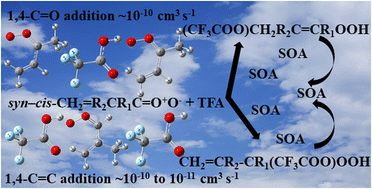Environ. Sci.: Processes Impacts, 2024, 26,233-246
DOI: 10.1039/D3EM00482A, Paper
DOI: 10.1039/D3EM00482A, Paper
 Open Access
Open Access This article is licensed under a Creative Commons Attribution-NonCommercial 3.0 Unported Licence.
This article is licensed under a Creative Commons Attribution-NonCommercial 3.0 Unported Licence.Dana K. Sackett, Jared K. Chrisp, Troy M. Farmer
Methylmercury (MeHg) continues to pose a significant global health risk to wildlife and humans through fish consumption.
The content of this RSS Feed (c) The Royal Society of Chemistry
Methylmercury (MeHg) continues to pose a significant global health risk to wildlife and humans through fish consumption.
The content of this RSS Feed (c) The Royal Society of Chemistry











